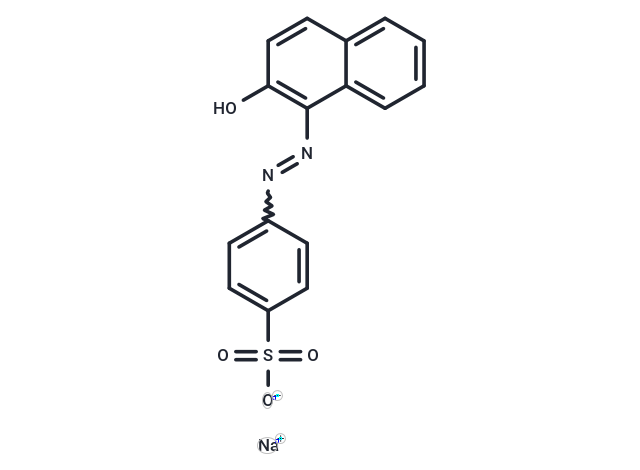Shopping Cart
Remove All Your shopping cart is currently empty
Your shopping cart is currently empty
Acid orange 7 (COLIPA C015) is a dye used to dye wool.

| Pack Size | Price | USA Warehouse | Global Warehouse | Quantity |
|---|---|---|---|---|
| 500 mg | $39 | Inquiry | Inquiry |
| Description | Acid orange 7 (COLIPA C015) is a dye used to dye wool. |
| In vitro | 1. Water quality monitoring and pollutant indication: 1. Acid Orange 7 is widely used in environmental monitoring, especially for detecting pollution in water sources or wastewater. Due to its bright orange color, when its concentration is high, it can significantly change the color of water, making it easy to quickly determine the presence of pollutants. 2. During the monitoring process, the concentration of the dye is usually low. Common detection methods include colorimetry or fluorescence, which quantitatively analyzes the acid orange 7 in water based on the absorbance or emission intensity of the dye. 2. Environmental pollution detection By measuring the change in the absorbance of acid orange 7 in water samples, it is possible to monitor whether there is untreated organic dye in wastewater and evaluate the level of water pollution. 3. Analytical experiments In laboratory analysis, chromatographic techniques (such as HPLC) are often used to quantitatively analyze the content of acid orange 7 in water samples. The specific operation method can be adjusted according to the purpose of the experiment and the equipment. |
| Synonyms | Orange II, D&,C Orange 4, COLIPA C015, CI 15510, 2-naphthol orange |
| Molecular Weight | 350.32 |
| Formula | C16H11N2NaO4S |
| Cas No. | 633-96-5 |
| Smiles | O=S(=O)([O-])c1ccc(N=Nc2c(O)ccc3ccccc23)cc1.[Na+] |
| Relative Density. | Ca. 1.525. Temperature:20 °C. |
| Color | Red |
| Appearance | solid |
| Storage | keep away from direct sunlight | Powder: -20°C for 3 years | In solvent: -80°C for 1 year | Shipping with blue ice/Shipping at ambient temperature. | |||||||||||||||||||||||||||||||||||
| Solubility Information | DMSO: 70 mg/mL (199.82 mM), Sonication is recommended. | |||||||||||||||||||||||||||||||||||
Solution Preparation Table | ||||||||||||||||||||||||||||||||||||
DMSO
| ||||||||||||||||||||||||||||||||||||
| Size | Quantity | Unit Price | Amount | Operation |
|---|

Copyright © 2015-2025 TargetMol Chemicals Inc. All Rights Reserved.